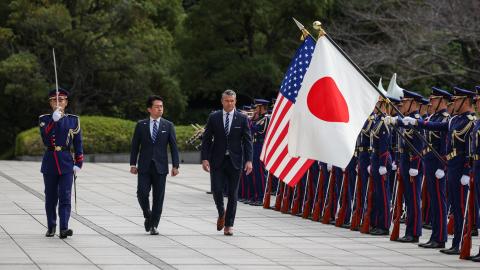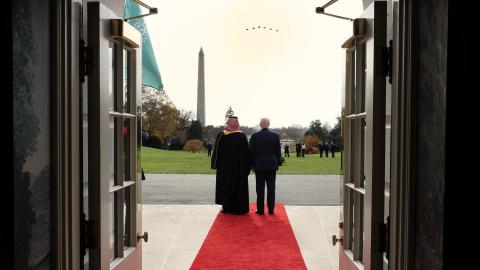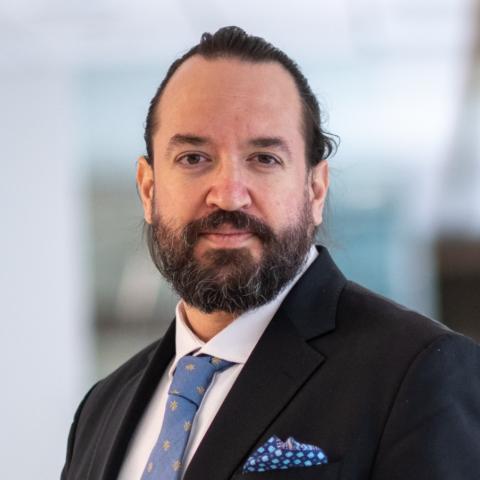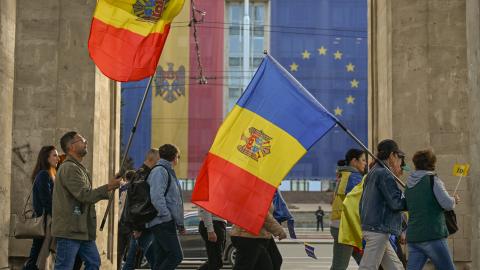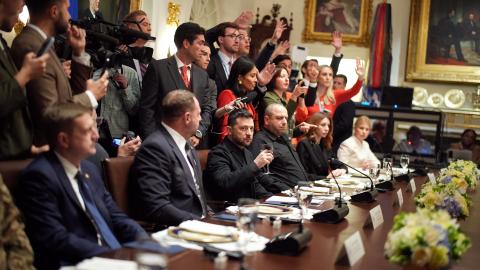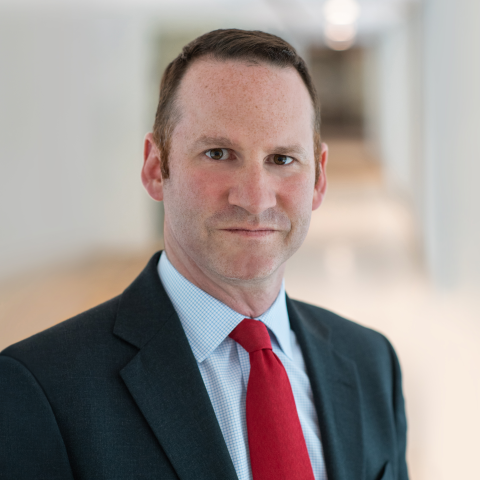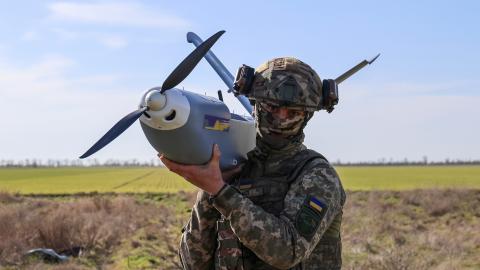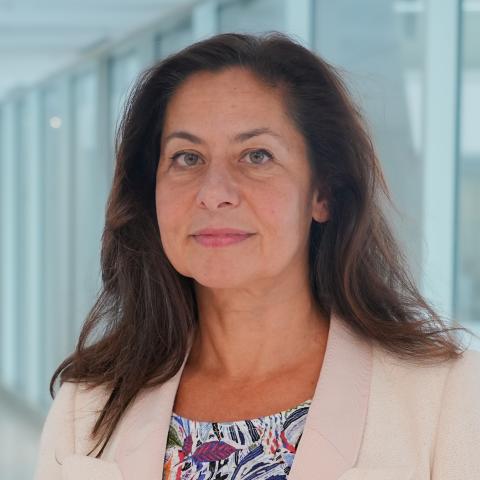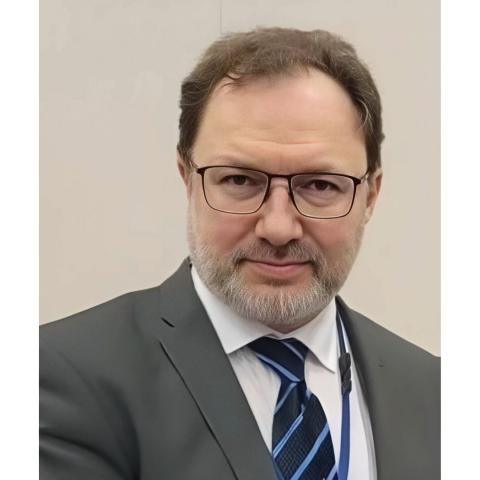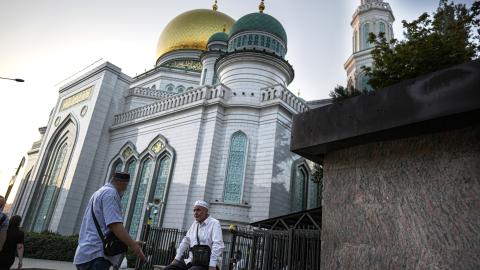Across three regimes—imperial (late eighteenth to early twentieth centuries), Soviet (1917–1991), and post-Soviet (1991–present)—the Russian state consistently institutionalized, coopted, and controlled Islamic authority from the Volga-Ural area to the Caucasus and Central Asia.
Understanding this long trajectory clarifies the nature of contemporary Russian power and its religious policy, including why and how it uses religious infrastructure to legitimize authority and suppress dissent and why independent Islamic scholarship and nationally oriented elites remain structurally constrained. This is especially salient in the fourth year of Russia’s full-scale aggression against Ukraine, during which time Russia has again leveraged religious narratives and institutions to fulfill its mobilizational and propaganda aims.
The Establishment of the Orenburg Muslim Spiritual Assembly
Muslim populations have lived in Russian territory since at least the tenth century AD (Islam took root in Dagestan in the eighth and ninth centuries, and Volga Bulgaria adopted it in 922). The early East Slavic principalities’ trade and diplomatic contacts with their Muslim neighbors (Volga Bulgaria, the Golden Horde, and Caucasian societies) contrasted with periods of military rivalry with Muslim polities and the gradual curtailment of Muslims’ autonomy in the Russian sphere of influence. However, until the late eighteenth century, Russia never exercised any direct, centralized control over Muslims’ religious affairs.1
The year 1788 marked a turning point in the religious policy of the Russian Empire. Previous methods of engaging with the Muslim population had proven ineffective because governance of the religious sphere had been fragmented and left to the discretion of local authorities. Periods of confessional pressure (e.g., bans on mosques, forced Christianization) had provoked resistance and driven religious life underground. There had been no unified registry or certification of the clergy; communities elected mullahs, but the state did not recognize them. Sharia practices and courts had operated outside the imperial legal framework. Moreover, there had been uncontrolled cross-border religious influence from the Ottoman Empire and Central Asian centers. The Russian state’s “missionary policy” consisted of state-backed Orthodox proselytism in the Volga–Ural and steppe via mission schools and brotherhoods, translated catechetical literature, stipends and civil privileges for converts, and administrative pressure on mullahs and mosques. But it had failed to achieve its stated goals: It had mostly produced nominal baptisms with frequent re-conversion to Islam, and there was growing resentment against the government. Similarly, the absence of legitimate intermediaries between the state and Muslim communities had hampered tax collection and military conscription.2
There thus arose a need for a structure capable of overseeing the Muslim clergy and implementing policies aligned with state interests. In the spirit of religious equality that began to emerge in the late eighteenth century, the Russian state developed a project to establish a centralized Muslim authority. On September 22, 1788, Empress Catherine II issued a decree “on the appointment of mullahs and other clerics of the Mohammedan law and on the establishment of a Spiritual Assembly in Ufa for the administration of all clerical ranks of that law in Russia.”3 Thus, Russia founded the Orenburg Muslim Spiritual Assembly (OMSA). Its task was to supervise the Muslim clergy throughout the empire, excluding Crimea.4 The new Muslim spiritual administration was placed in Ufa (within the Orenburg Governorate) rather than in the state capital of St. Petersburg because its designers conceived the model of “official Islam” as a frontier arrangement close to where the empire’s principal Muslim communities were concentrated—the Tatars and Bashkirs of the Volga–Ural region as well as steppe populations. Embedding the OMSA within the Orenburg administrative circuit (under the governor-general’s oversight) rather than the imperial capital ensured day-to-day control over clerical appointments (e.g., mullahs and qadis), an operational link to local communities, and real influence over religious life in the imperial capital.
Russia partially borrowed the model for this new institution from the Ottoman Empire.5 The key similarity lay in the creation of a centralized body to oversee the activities of Muslim religious leaders under the control of the secular state—mirroring the Ottoman system, which formally integrated religious institutions into the structure of government.6 The Russian authorities adopted a hierarchical framework consisting of Islamic legal figures, such as the mufti and qadi, operating under state supervision and appointed these religious officials directly rather than through community election. A significant aspect of this model was deliberate reliance on appointing Tatars and Turkic-speaking peoples, who had already well institutionalized and adapted their Islamic tradition to life within an empire.7 As a result, the use of Turkic terminology and the intermediary role of the Tatars made the new institution more intelligible and legitimate in the eyes of the Muslim population, creating a stable link between religious life and imperial authority.
Goals and Functions of the Muftiate
The establishment of the OMSA was a logical continuation of the Russian Empire’s policy in the late eighteenth century. It aimed to integrate the Muslim population into the administrative system of the state. After a long period of forced Christianization and repression, especially in the sixteenth and seventeenth centuries, a more pragmatic and Enlightenment-inspired approach emerged under Catherine II.8 Instead of directly suppressing or eradicating Islam, the state chose to institutionalize it and incorporate it into a framework of government oversight.
The Orenburg Assembly became a key element of this strategy. The Russian government subordinated it and, from 1811 onward, placed it under the jurisdiction of the Department of Religious Affairs of the Ministry of the Interior.9 The state directly appointed the mufti, and the minister of the interior appointed qadis at the mufti’s recommendation. The mufti’s role became officially known as the mufti of the Orenburg Mohammedan (i.e., Muslim) Spiritual Assembly, and later writers sometimes styled him an “all-Russian mufti” because the Assembly covered Inner Russia and Siberia (although strictly speaking, his authority was not empire-wide, as Crimea and later Transcaucasia had separate administrations).
By design, this structure tethered the Muslim clergy to secular power, making them loyal and making their appointments and policies dependent on imperial oversight. The creation of the Assembly allowed the empire to exercise preventive control over the religious life of Muslims, particularly amid territorial expansion and ongoing rivalry with the Ottoman Empire. It embedded religious authorities, on whom the Muslim population traditionally relied, in the imperial administrative hierarchy. Thus, the muftiate became a mechanism for coordinating the relationship between Muslim communities and the state, ensuring governability, legitimizing imperial authority, and reducing the risk of separatism.10
To clarify the degree of this control and institutional integration, it suffices to cite three representative sections from the Collection of Circulars and Other Directives for the District of the Orenburg Mohammedan Spiritual Assembly, 1841–1901:
- “Procedure for Administering the Oath to Mohammedans” (p. 104)
- “Form of the Oath of Allegiance and of Fidelity to Service” (p. 127)
- “High Solemnities and Imperial Days on which prayers are offered for the health and well-being of His Imperial Majesty and the Entire August House” (p. 130)
Taken together, these sections regulate oath-taking procedures, standardize formulas of loyalty, and fix a calendar of ritual observance—demonstrating how the OMSA embedded subjects’ religious practice in the state’s mechanisms of oversight and symbolic mobilization.11
Administrative Turn: From Frontier Intermediaries to Domestic Regulators
Under its first three muftis—Mukhammadjan Khusainov (1788–1824), Gabdessalyam Gabdrakhimov (1825–1840), and Gabdulvakhid Suleymanov (1840–1862)—OMSA functioned primarily as a frontier instrument. It certified and dispatched mullahs to the Kazakh hordes, mediated disputes along the Orenburg line, and served imperial objectives in Central Asia and the Caucasus amid rivalry with the Ottoman Empire.12
From the 1860s onward, Russia reassigned frontier governance in the steppe to new military-governor generalships and secular courts, narrowing OMSA’s external remit, especially after the removal of the Kazakh steppe from OMSA’s jurisdiction. As a result, the muftiate shifted its focus to domestic affairs in the Volga–Ural core. This meant routine regulatory functions inside the empire: registering mosques and certifying clergy; overseeing family law such as nikāḥ (marriage contract), ṭalāq (divorce), and inheritance; managing and auditing waqf property (charitable endowments); supervising curricula and licensing teachers; reviewing petitions and arbitrating intra-communal disputes; and submitting regular reports to the Department of Religious Affairs. In other words, OMSA evolved from an outward-facing frontier mediator into an inward-facing regulator embedded in the imperial bureaucracy.13
The selection and social profile of OMSA appointees changed in step. Whereas early muftis were typically Volga Tatar elites with classical Islamic training and local authority, by the mid-nineteenth century, the crown began prioritizing bureaucratic reliability and service credentials over Islamic authority. The Ministry of Internal Affairs consequently preferred administrative candidates (including Tatar landowners) rather than esteemed religious scholars. Salimgerei Tevkelev, appointed in April 1865, epitomized this turn: A hereditary noble and career military officer, he met the state’s expectations for loyalty and administrative discipline. He was later recognized for his service as mufti with several Russian state decorations, including the Orders of St. Stanislaus, St. Anna, and St. Vladimir, First Class.14
Imperial Policy on Muslim Education
During the Caucasian War of 1817–1864—in which the Russian Empire’s southward push into the North Caucasus and the armed resistance of local peoples sparked a protracted conflict—the Russian administration placed particular emphasis on the religious education of Muslims. General E. A. Golovin, who commanded the Caucasian Corps from 1837 to 1842, wrote to the war minister, Count Chernyshev, about plans to establish “wherever possible . . . Muslim schools for the training of clergy, through whom we can influence the minds of the people.”
In response, Chernyshev supported the idea, noting, “The clergy must be given special protection . . . through courteous treatment, appropriate rewards, and improved financial support, we must seek to align it with our views and interests.”15
Russia’s immediate interests in this war included securing the southern frontier and key passes across the Greater Caucasus, consolidating lines of communication with Transcaucasia (including Georgian lands), limiting the influence of the Ottoman Empire and Qajar Persia, and integrating highland societies into the imperial legal and administrative order.16 Authorities conceived religious education as an instrument to achieve these aims: by shaping a loyal clergy, standardizing preaching, and instituting control over marital/family and judicial practice, they sought to demobilize resistance, weaken networks of independent religious leaders, and bind communities to the imperial bureaucracy.
In substance, these schools combined basic theological instruction with elements of “civic literacy” necessary for imperial administration: literacy in Russian, arithmetic, and clerical record-keeping (e.g., maintaining vital registers and rolls, formalizing marriages and divorces and inheritance cases), alongside familiarity with required reporting formats and set formulas of loyalty. In this way, religious education functioned as a tool for suppressing national-liberation movements and incorporating Muslim communities into the imperial order through a clergy that was institutionally dependent on the state.
OMSA in the Late Imperial Period (1880s–1917)
During the First World War, the sheikh al-Islam of the Ottoman Empire (the state’s highest religious jurist, head of the ulama, and custodian of fatwas) publicly endorsed the 1914 jihad proclamation. The document cast the conflict as a defensive jihad to protect the Caliphate and Muslim lands and urged Muslims living under Entente control to resist and aid the Ottoman cause. In response, the fifth mufti of OMSA, Mukhammedyar Sultanov (in office 1886–1915), adopted an explicitly pro-Russian stance. He condemned the call to jihad and urged Russia’s Muslims to remain loyal to the empire against the fellow-Muslim Ottoman state. For his loyalty and active support of state policy among Muslims, Sultanov received several high decorations, including the Order of St. Stanislaus (First Class, 1888), the Order of St. Anna (First Class, 1896), and, in 1898, the Order of St. Andrew the First-Called.17
It is important to consider how Muslim communities viewed OMSA. Overall, attitudes were mixed and pragmatic. In the Volga–Ural core, many communities used the Assembly as a state-recognized channel for registering mosques, certifying clergy, formalizing family-law acts (marriage, divorce, inheritance), defending waqf property, and submitting petitions—thereby checking the arbitrariness of local officials and rival elites. Others criticized it as an instrument of state control, especially as police oversight and censorship tightened. On balance, the institution delivered administrative benefits that many Muslims found useful until the wartime strains and the 1916–1917 crises eroded confidence.18
Mukhammed-Safa Bayazitov (1877–1937) was the sixth and last mufti of OMSA, serving from 1915 to 1917, and it was under his tenure that the reputation of OMSA suffered in the eyes of Russian Muslims. Bayazitov was educated at the Muhammadiya madrasa (Kazan) and at the Faculty of Oriental Languages of St. Petersburg University and served as imam and akhund, teaching Islam in military schools.19 His appointment as mufti, following Sultanov’s death in 1915, provoked strong opposition from Muslim intellectuals and members of the Duma’s Muslim Fraction, who accused him of being an informant for the Okhrana (tsarist secret police) and of being out of touch with community needs. As a result, an Assembly that the Muslim population had long perceived as a relatively neutral administrative forum became politically contested and lost popular legitimacy. His appointment had come to symbolize a late-imperial crisis of confidence in the model of managing Islam on the eve of the empire’s collapse. He was removed and placed under house arrest at the initiative of Muslims in Ufa immediately after the 1917 February Revolution that overthrew the Romanov dynasty.
Stage I of Soviet-Muslim Relations (1917–1926): Tolerance and Pragmatism
Immediately after the October Revolution, the Soviet government initially demonstrated relative tolerance toward the Muslim clergy. This was part of a broader strategy aimed at exporting the revolution to the countries of the East, many of which were Muslim. However, even during this early phase, repressions against Muslim leaders began to unfold at the local level. One example is the fate of Sheikh Ali Mitaev (1881–1925), one of the most influential Muslim leaders in the North Caucasus during the Russian Civil War.
A Sufi sheikh and respected religious figure in Chechnya, Mitaev entered into an agreement with the Soviet authorities in 1919, offering his support in exchange for the preservation of Islamic autonomy, Sharia courts, and religious freedom in Chechnya.20 Initially, the Bolsheviks accepted these terms, counting on Mitaev’s authority among the highlanders to help stabilize the region. Mitaev played a significant role in restoring order—he ended attacks on railways that had been carried out by anti-Bolshevik irregulars, established cooperation with revolutionary committees, and even represented Muslim interests in negotiations with the central government.
By the mid-1920s, however, the Kremlin began to view him as a dangerous political rival because his standing as a Sufi sheikh gave him an independent power base. He could mobilize armed murids (Sufi spiritual novices), arbitrate disputes through Sharia courts, marshal religious and charitable resources, and negotiate directly with Moscow. In a tightening post-civil-war environment, these functions made him look like an alternative center of authority capable of linking local grievances to broader anti-Soviet networks. On March 8, 1924, authorities arrested Sheikh Mitaev on charges of preparing a counterrevolutionary uprising in the North Caucasus in alliance with Georgian nationalists. They imprisoned him in Rostov-on-Don and repeatedly transported him to Moscow for interrogations, conducting the investigation under strict secrecy. Despite the lack of direct evidence of an armed conspiracy, they declared Mitaev an “especially dangerous element” and sentenced him to the highest penalty: In September 1925, he was executed by firing squad in the central prison of Rostov-on-Don.21 His death became a symbolic act, the final break between the Soviet regime and those Muslim leaders who had initially supported the revolution, hoping it would bring autonomy and freedom of religion.
Stage II (1926–1943): Mass Repression and Isolation
In this second phase, the Soviet government’s relationship with Islam shifted into open hostility. Under Stalinism—a system suspicious of and hostile to any independent identity or belief—Muslims in the Union of Soviet Socialist Republics (USSR) faced severe repression as both a religious and ethnic minority. The government systematically closed or demolished mosques and arrested religious figures including mullahs, imams, and muftis, then sent them to labor camps or executed them as “enemies of the people.”22
The state dismantled the legal system of Muslim education, shut down madrasas, and made Islamic instruction impossible even in unofficial settings. Cultural isolation deepened through radical script reforms that severed new generations from their pre-revolutionary written heritage. The state mandated the replacement of Arabic script with Latin and later with Cyrillic script across many Muslim-majority nationalities. It also confiscated books written in Arabic and Old Turkic from libraries, condemning them as “ideologically harmful.”
These repressions reached a climax during the Second World War, even as Stalin simultaneously, and somewhat contradictorily, began conducting new outreach to the USSR’s Muslim communities (see below). Amid rising suspicion toward “unreliable nationalities” during the war, the authorities began mass deportations of Muslim ethnic groups. In 1943 they deported the Karachays and Balkars, and in 1944 the Crimean Tatars, Chechens, and Ingush. They sent the Karachays, Balkars, Chechens, and Ingush chiefly to the Kazakh and Kyrgyz republics and sent the Crimean Tatars to the Uzbek republic, while sending contingents to Kazakhstan and Tajikistan as well.23 These operations, which they carried out under the pretext of “collaboration with the enemy,” involved brutal violence and resulted, in aggregate across deported populations, in hundreds of thousands of deaths from exposure, disease, and starvation both during transportation and in special-settlement regimes.24 By the end of this period, the Soviet Union had not only repressed Islam but driven it from public life—as a religion, a culture, and a form of collective identity.
Stage III (1943–1988): Revival under State Control
Even as some Muslim minorities suffered heavily during the war, in 1943, Joseph Stalin ordered the establishment of a centralized body for managing Islam in Central Asia—the Spiritual Administration of the Muslims of Central Asia and Kazakhstan (Russian: Духовное управление мусульман Средней Азии и Казахстана, commonly known as SADUM). At the Muslim Congress in Tashkent in October 1943, Muslim leaders called on believers to fight the Nazis; under the banner of patriotism, SADUM raised funds, food, and clothing and provided support to soldiers’ families. For his efforts, Sheikh Eshon Babakhan, the first chairman of SADUM, received the Order of the Red Banner of Labor in 1955.25
At first glance, this wartime return to legalized Islamic structures seems to contradict the peak repressions and deportations of 1943–1944. In reality, both trends unfolded simultaneously because the state changed the way it managed religion. During wartime, it treated any uncontrolled religious activity as a security risk and potential conduit for enemy influence (hence the deportations), yet the leadership also recognized that it could mobilize the “Islamic factor” for patriotism at home and for messaging with Muslim countries abroad. In practice, the security and religious-administrative apparatus inverted much of the prewar approach: whereas the NKVD had earlier focused on recruiting already-established clerics, the wartime and postwar pattern prioritized recruiting politically reliable candidates first and then sending them into the few permitted Islamic schools—institutions themselves supervised within the state-security orbit—so that an officially loyal religious elite would emerge from within the system. This shift cleared space by purging or marginalizing prewar, independent religious networks and advancing cadres that Russian leaders had structurally embedded in the new order.26
The USSR formalized four territorial Muslim spiritual administrations: the Spiritual Administration of Muslims of Central Asia and Kazakhstan (1943), the Spiritual Administration of Muslims of the North Caucasus (1944), the Spiritual Administration of Muslims of Transcaucasia (1944), and—based on the earlier Central Spiritual Administration—the Spiritual Administration of Muslims of the European Part of the USSR and Siberia (reorganized and renamed in 1948). Although it officially presented these bodies as independent, they functioned under strict supervision by the state’s Council for Religious Cults (from 1944) and, after 1965, its Council for Religious Affairs under the USSR Council of Ministers.27
In practice, the leadership of all four administrations operated under constant oversight. For example, the head of the Spiritual Administration of Muslims of the European Part of the USSR and Siberia (Ufa) was required to
- submit twice-monthly reports to the Commissioner of the Council for Religious Affairs;
- seek approval for personnel appointments within the administration; and
- obtain authorization for travel outside Ufa.28
For decades, the only functioning Muslim educational institution in the USSR was the Mir-i-Arab madrasa in Bukhara—an early-modern institution that reopened in 1946 under SADUM. Mir-i-Arab belongs to the Sunni tradition and follows the Hanafi madhhab (school of jurisprudence). Later, the Barakhan madrasa in Tashkent opened as a second step in this supervised revival, but it operated only from 1956 to 1961. Education remained elite and tightly controlled. Admission to a madrasa generally required cooperation with state security, as former mufti and Chechen Republic President Akhmad Kadyrov acknowledged, for example. Among the graduates of Mir-i-Arab were many future state and religious leaders of the post-Soviet space, including Ravil Gaynutdin, Usmankhan Alimov, Allahshukur Pashazade, Ratbek Nysanbayev, Talgat Tadzhuddin, and Sheikh Muhammad Sodiq Muhammad-Yusuf. Foreign students also attended; the first foreign student was reportedly Abdukadir Aminov of China.29
Post-Soviet Period
With the collapse of the USSR, the peoples of the former empire—especially in the Muslim republics—gained hope for genuine freedom of religion, national self-determination, and democratic change. However, the reality proved different. The Kremlin simply adapted old colonial methods to new conditions, continuing to use Islam not as a spiritual value but as a tool of political control and influence. This was especially evident during the Chechen wars (1994–1996 and 1999–2009).
The Russian leadership, which had long-standing and strong ties in the Islamic world, deliberately worked to discredit the national liberation movement of the Chechen Republic of Ichkeria (ChRI). Using these connections, Moscow not only blocked all ChRI attempts to gain international support but also crafted a narrative portraying the Chechen resistance as a terrorist movement. While Chechens fought for their independence and their right to live freely, the global—including Muslim—public began to see them solely as “radicals” and “extremists.” Chechen leaders believed in Muslim solidarity and expected the Islamic world to raise its voice in defense of a people subjected to genocide and occupation, but Muslims cruelly dashed these naive hopes. In March 2005, Russian special services assassinated the legitimate president of the ChRI, Aslan Maskhadov—yet just two months later, in June of that year, the Organization of Islamic Cooperation (OIC) granted Russia observer status.30
This was an overt signal: Despite the OIC’s declared principles of anti-colonialism and support for Muslim peoples, the Islamic world had chosen to side with the Kremlin—a state that was openly destroying a Muslim region and its political elite. The OIC did not even grant the ChRI observer status although it met all formal criteria. Moreover, at Russia’s initiative, it pushed Chechen resistance beyond the bounds of legitimacy, framing the effort as a “global security threat,” and viewed the movement’s leaders no longer as political representatives but as terrorists. Thus, Moscow not only solidified its position in the Islamic world but also used religious diplomacy to achieve complete isolation of the Chechen resistance. This episode became a symbol of a new stage in colonial policy: religion was no longer simply a tool of domestic control but now also a key tool in the service of Kremlin geopolitics. For those who had hoped for solidarity and support, it marked a period of bitter disappointment and the realization that a more powerful player could weaponize even the Islamic world against them if it served that player’s interests.
Present Day
In 2024, Russian president Vladimir Putin arrived in Grozny for the ceremonial opening of one of the largest mosques in the region. The head of the Chechen Republic, Ramzan Kadyrov, and Chief Mufti Salah Mezhiev accompanied him, reporting to the president that 1,461 mosques were functioning in Chechnya and another 115 were under construction. According to official statistics, Chechnya’s population in 2024 was 1,552,866. However, independent estimates suggest that over recent decades, 30%–50% of the population has left the republic due to wars, political repression, poverty, and lack of opportunities.31 In response to this report, Putin expressed gratitude to the clergy for the “defense of Russia’s interests” and, addressing the mufti directly, said, “This is your work, your mission before all our people. You are doing a common cause of enormous importance, no less important than what we saw at the training ground.”32
Putin’s words were telling: Why, in Putin’s view, is this “no less important than . . . the training ground”? The Kremlin’s political logic relies on security services to shape a cadre of state-managed clergy who—drawing on religious training—select Qur’anic verses and hadiths to legitimate the state’s position in the eyes of believers. In the context of the war against Ukraine, this role has been especially visible: the mufti of Chechnya, Salah-Haji Mezhiev, publicly called the war a “jihad,” “a war for the Prophet and for Islam,” and framed Chechen participation as “jihad in the path of God.”33 Supporters of the authorities have invoked precedents from early Islamic history (including analogies to Muslims acting under a Christian ruler, the Negus of Abyssinia), prompting theological debate about whether such a jihad is admissible.34
In the Chechen context, critics argue that this analogy does not resolve core contradictions. In the 1990s, Chechen leaders declared jihad against Russia, and part of the population still does not regard the present political arrangement as true reconciliation. There is consequently a persistent distrust of the current mufti among regime opponents, who see his rhetoric as an instrument of state mobilization rather than religious service.35 Moreover, for many Chechens, the original war is not “over”: Akhmed Zakayev leads a government in exile that remains active, and in the first days after Russia’s full-scale invasion of Ukraine in February 2022, it publicly called for organizing and coordinating Chechen volunteer formations on Ukraine’s side.36 Chechens from the diaspora—especially across Europe and, in some cases, Turkey and the broader Middle East—joined or reinforced units identified with the Ichkerian movement.37 Against this tide of renewed mobilization and solidarity with Ukrainians against a common adversary, Mezhiev’s agitational appeals have had limited persuasive power.
There is also a striking disparity in how the contemporary Russian state treats Islam, which Putin’s 2024 visit to Grozny underscored: Whereas Chechnya has more than a thousand mosques, per official statistics, only five official mosques serve Moscow’s estimated 4 million Muslims.38 This disproportion indicates the federal government’s particular approach to religious policy in Chechnya. In a region that remains among Russia’s leaders in terms of federal subsidies, unemployment, corruption, human rights violations, and acute shortages of quality healthcare and education, the emphasis is not on solving social problems but on the demonstrative construction of religious infrastructure. This turns Islam into a tool for legitimizing power and suppressing dissent, and the clergy into agents of the central government, reproducing the logic of imperial and Soviet colonial policy.
More broadly, the pattern reflects a segmented “confessional management” model in which the state effectively parcels the country into religiously coded regions. Islam is instrumentalized in the North Caucasus to stabilize loyal elites, while the capital is symbolically reserved for the primacy of the Russian Orthodox Church (ROC). Given the long-standing, documented ties between senior ROC hierarchs and state security organs,39 the authorities are loath to permit high-profile mosque construction in Moscow, treating it as a reputational blow to the ROC’s social preeminence. In practice, resistance to new mosques becomes a channel through which the ROC accrues influence in urban protest moods: It cultivates fear that a mosque will anchor migrant communities, alter the city’s ethnic balance, and signal a departure from the “traditional” order. In this narrative, the mosque functions as a visible marker of change, which the ROC uses to reaffirm its centrality in Russia’s civil religion.
One of the most illustrative examples of how state authorities allegedly deploy agents and embed them in the religious sphere is Akhmad Kadyrov (1951–2004), the former president of the Chechen Republic who defected to the Russian government at the outbreak of the Second Chechen War. Many consider him a traitor to the Chechen people and his original cause. In an alternative reading, some analysts argue there was no “transformation” at all: From the very start of his religious training—entering a madrasa in late-Soviet Central Asia—he had agreed to cooperate with state security and deliberately embedded himself in the religious sphere. Thereafter, his biography appeared as a sequenced project in which key steps reflected the interests of the security services. Zelimkhan Yandarbiyev publicly alleged in 2004 that “since 1981 Kadyrov cooperated with the KGB,” a conclusion he said arose after Ichkerian forces seized Grozny in 1996 and obtained KGB/FSB files.40
The milieu in which Kadyrov studied was itself under tight Chekist oversight. Rudnik (Abdul-Rashid) Dudaev was a career officer who rose from a USSR KGB colonel to an FSB major general. Authorities regarded him as a leading specialist on Islam after he spent years supervising Islamic organizations in the Uzbek SSR, precisely when Kadyrov was enrolled at Mir-i-Arab and the Tashkent Islamic Institute. Kadyrov later brought him into Grozny, first as Secretary of the Chechen Security Council (February 2001–November 2002) and then as head of the administration’s security apparatus.41
In this logic, Kadyrov’s subsequent shift to the Kremlin’s side was not treachery or betrayal but the fulfillment of his original assignment. For his service to Moscow, he received the title Hero of the Russian Federation. After he was assassinated on May 9, 2004, the state posthumously awarded him the Hero’s star, and commemorations followed that year in Moscow—including a street named after him and the erection of a monument in Moscow. Within this interpretation, these actions signified not a celebration of his “betrayal” but the canonization of a model “loyal” Muslim leader whose primary allegiance is to the Russian state.42
Conclusion
The history of Russian governments’ relationship with Islam is a history of systematically using religion as a tool of colonial control. From the Tsarist Empire through the Soviet period and into modern post-Soviet Russia, the central government has consistently exercised close scrutiny and strict control of Islamic clergy and religious institutions. The Soviet Union destroyed the traditional Muslim intellectual infrastructure, closing madrasas, suppressing religious literature, and severing connections to the broader Muslim world. In that infrastructure’s place, it built a new system—a managed and “safe” Islam grooming clergy under the watchful eye of security services. The Mir-i-Arab madrasa and its graduates became part of this system; it was they who generally assumed key posts in the spiritual administrations of the USSR, and later in the independent republics.
After the collapse of the Soviet Union, the Muslim republics formally gained independence and began building their own political narratives based on ideas of national revival, sovereignty, and identity. However, the religious sphere in these countries remained largely under Moscow’s control. Many religious leaders—from Central Asia to the Caucasus—have ties to the FSB (formerly the KGB) or are direct products of religious institutions that the security services created and oversee. These figures continue to advance policies beneficial to the Russian state, discrediting independent religious movements and hindering the development of a truly independent Islamic theology and nationally oriented spiritual elite. Thus, despite formal independence, the religious sphere in the post-Soviet republics remains heavily colonized.
Islam could have become a source of national mobilization and cultural sovereignty. Instead, Russia has turned it into a tool of manipulation, suppression, and integration into the framework of the “Russian world.” Control over the religious space gives the Kremlin not only symbolic but real power in Muslim regions. It enables manipulation of mass sentiment, suppression of protest potential, and the redirection of religious feeling toward loyalty to Moscow rather than local institutions. This is the modern form of colonialism—soft, institutional, but no less effective. Islam in the post-Soviet republics continues to be not a sovereign force but a tool in someone else’s geopolitical game.
From the standpoint of canonical Islamic tradition, “Russian Islam” represents in many ways a deviation or even an innovation. Yet it has become so deeply rooted as to become an integral part of the religious identity of Russian Muslims. As Gustave Le Bon aptly observed, “If it is difficult to impose a new idea, it is no less difficult to destroy an old one.”43 The paradox lies in the fact that what originally developed as a tool of colonial control has over time become a recognized and stable tradition. Therefore, it is extremely difficult to speak of any fundamental change in Islam in Russia today. Rather, one might speak of the potential emergence of more morally authoritative and respected religious leaders—not appointed by the state but representing the believers themselves.
